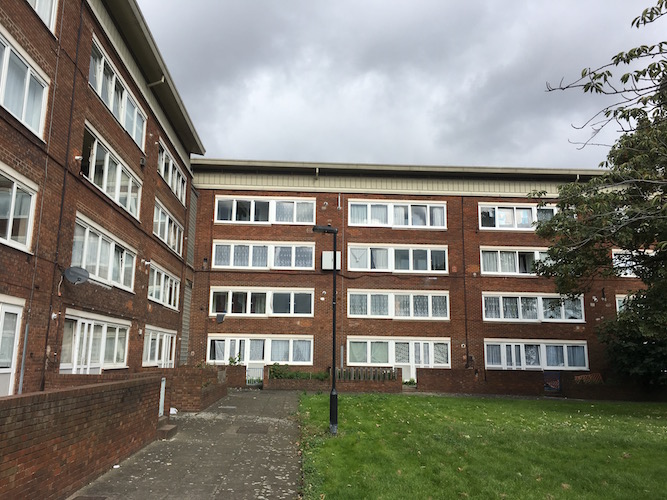While councils across the country have been celebrating a hundred years of council housing since the Housing Act 1919, Haringey Council has been embroiled in a very contemporary housing battle.
Labour councillors have been at war over plans to sell off council land and buy back housing for social rent rather than building council homes themselves. as their 2018 manifesto promised.
It’s a battle which can trace its roots back to the 1919 legislation, known as the Addison Act after health minister Christopher Addison. It broke new ground in both obliging local authorities to assess the need for “houses for the working classes” in their area and in providing government funding to build those homes.
At issue in Haringey is the Red House site in south Tottenham, a former council care home closed in a cuts round in 2013. A 2016 agreement to sell the site, promising 30% affordable housing, lapsed last year because planning applications had not been brought forward.
A revised plan secured planning permission in July, based on a new deal which would see almost 55% affordable housing. The developers would complete the entire scheme, including refurbishment of a redundant pub adjoining the site, and then sell 46 of the new homes back to the council to be let at council rents.
Haringey’s cabinet member for housing, Emine Ibrahim, argued that a do-it-yourself council build scheme would mean delays and could risk no homes at all being delivered because of the planning constraints on the site. She found herself facing protesters lobbying against “privatisation” – some of them the same protestors she and other councillors had stood alongside when opposing the previous administration’s controversial Haringey Development Vehicle (HDV) scheme.
Why wasn’t the council simply using its own land to build its own council housing itself, protestors including nine rebel Labour councillors were asking?
Back to the Addison Act, which was important particularly because it backed aspirations for the building of affordable housing with the funding to make it happen. Today, housing policy is still all about money – or the lack of it, with a massive cut in government funding for housing instigated by the coalition government in 2010.
The decision saw council housebuilding dwindle almost to zero, averaging 1,400 new homes annually across the country at the same time as more than that number were sold off under Right to Buy – one outcome being 55,000 Londoners currently living in temporary accommodation, waiting for permanent affordable housing.
Coupled with government-imposed restrictions on councils’ ability to borrow against future rental income, the cut meant that resources available to town halls were not sufficient to cover the costs of building new housing at social rent, as reports into the sector increasingly pointed out. The system was favouring “affordable” rents that were often seen as anything but.
The HDV, a 50:50 council/private sector partnership to take forward housing development on council land, including new build and estate renewal, was one example of a housing company approach – effectively a way to work around government restrictions. It was killed off by anti-private sector political opposition. Now, though, it is Conservative government policy changes that are supporting a shift back to council house building in Haringey and across London generally.
Firstly, that is because, after long campaigning, borrowing restrictions have been lifted, allowing town halls to raise additional capital. Secondly, there’s more money from central government, including funding specifically for council homes in London as part of a £4.8 billion funding package agreed between Whitehall and London Mayor Sadiq Khan.
It’s these funding sources which are supporting Haringey’s Red House scheme, a deal which, as officers reported at the council’s cabinet, had been ruled out previously because of government rules on capital funding.
A “different model for the delivery of social rented homes” could now be taken forward, they said. And that includes land deals where the availability of extra funding can boost social housing numbers, bringing the land price down – delivering in this case 55% affordable homes rather than 30%.
In the case of the Red House site, there was already a scheme meeting local planning policy requirements ready on the table, meaning that building can start this year rather than, as officers estimated, 2022 – important for families desperate to get out of often unsatisfactory temporary accommodation, and in line with the council’s political pledge to have delivered at least a thousand council homes by that date. There’s an imperative for City Hall as well, where its funding is in play, with the next mayoral election impending.
Planning, design and development expertise is also lacking in many councils, after years of funding shortfalls, and significant direct building requires increased capacity. For Haringey, direct delivery might have cost less but would have taken longer while temporary accommodation costs for homeless families continued to mount.
Finally, despite recent changes, there’s still not enough money in the system. Direct development of Haringey’s Red House site, for example, would still have required some building for sale. “We need market homes to give us the subsidy we need,” Haringey’s housing director Dan Hawthorn told councillors last week.
As Mayor Khan’s housing chief James Murray said last week, commenting on the Addison Act centenary: “Councils…need more money from the government. There’s no getting around this.”
Meanwhile, Haringey is pressing on with its council house programme, a combination of acquisition and direct build, estimating that 350 new council homes will have been started on site by next summer. But a return to the days of 100% council home developments may be some way off.
Image: existing council homes in Haringey.
OnLondon.co.uk is dedicated to providing fair and thorough coverage of London’s politics, development and culture. The site depends on donations from readers and is also seeking support from suitable organisations. Read more about that here.

